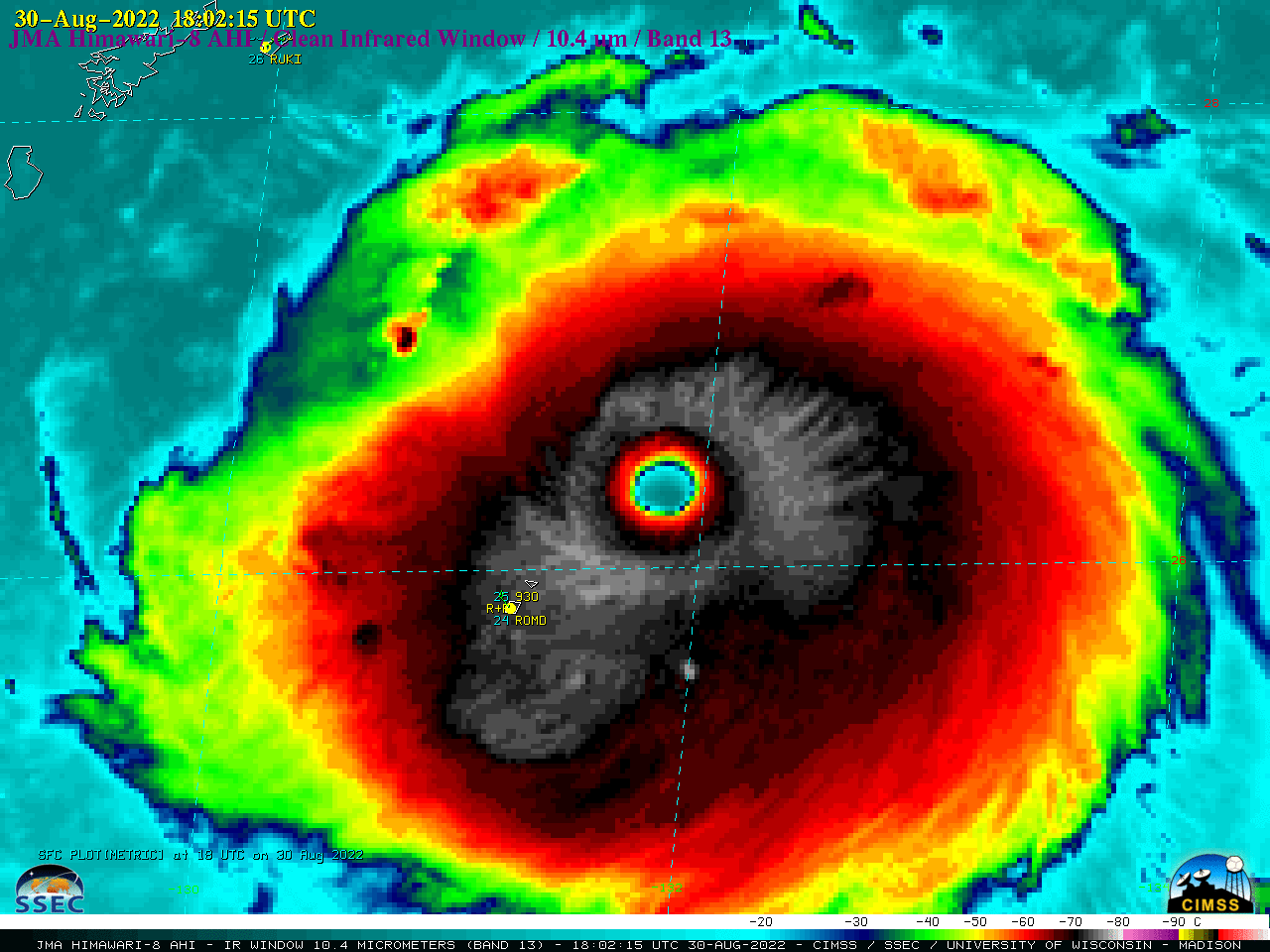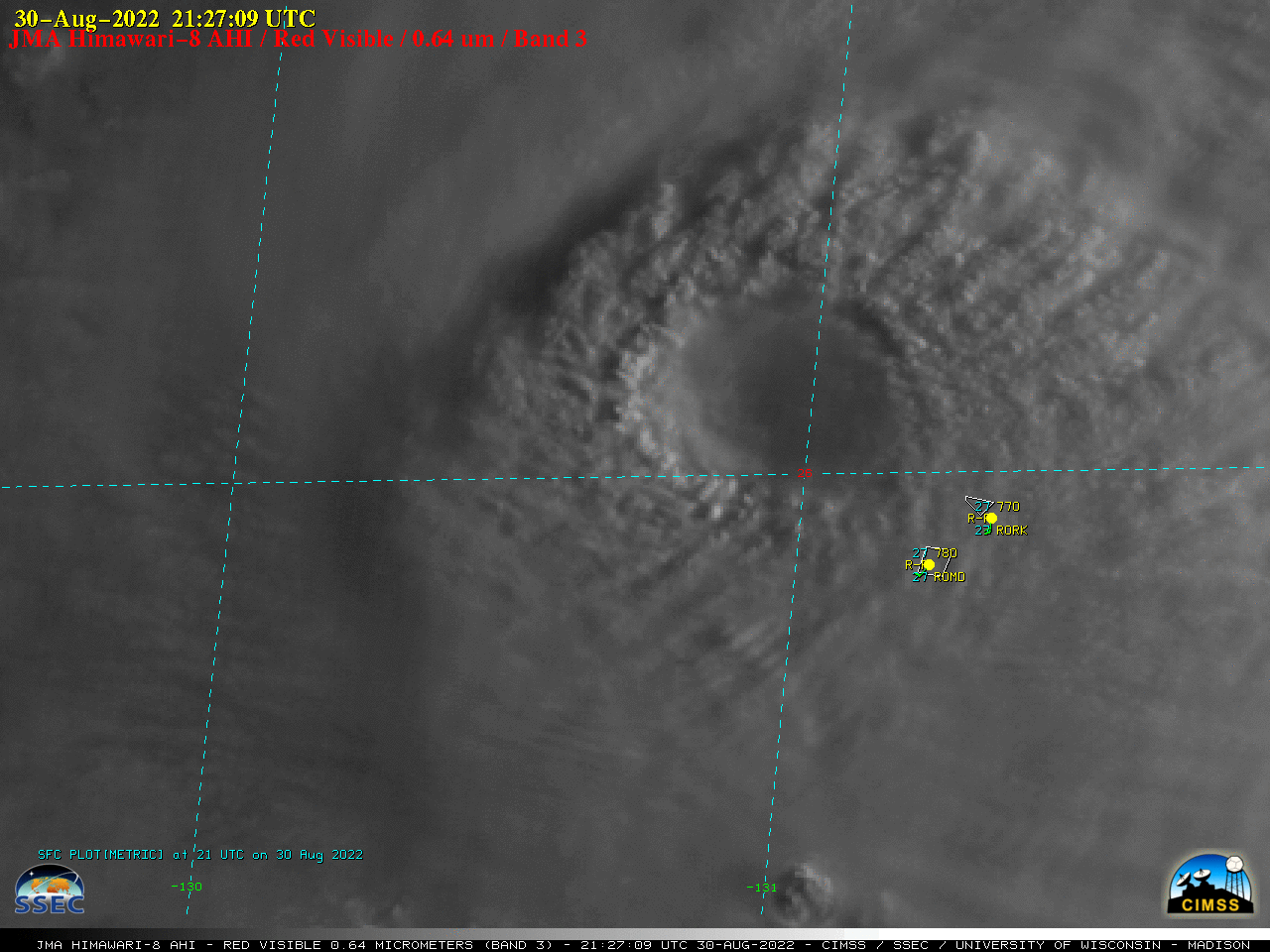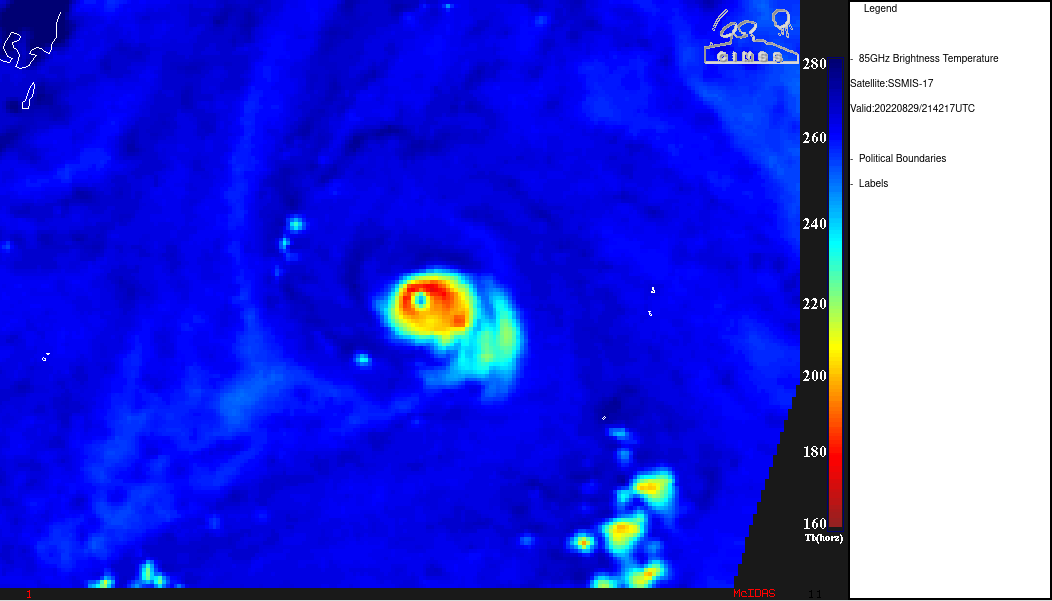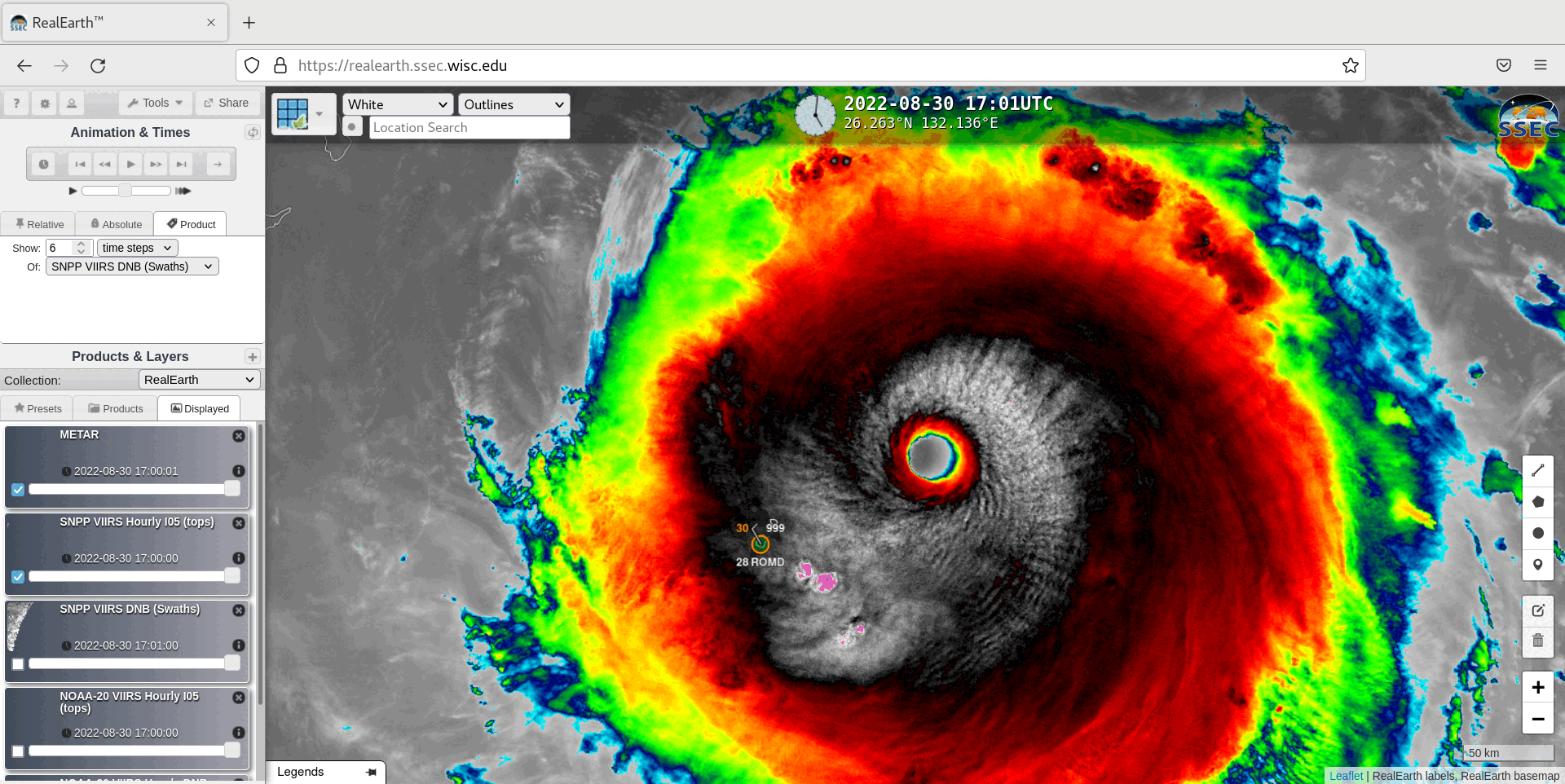Super Typhoon Hinnamnor in the West Pacific

JMA Himawari-8 Visible (0.64 µm) images [click to play animated GIF | MP4]
2.5-minute Himawari-8 Infrared (10.4 µm) images (below) revealed a few pulses of convection which exhibited cloud-top infrared brightness temperatures of -80°C and colder (violet pixels).

JMA Himawari-8 Infrared (10.4 µm) images [click to play animated GIF | MP4]
===== 30 August Update =====

Himawari-8 Infrared (10.4 µm) images [click to play animated GIF | MP4]
Post-sunrise Himawari-8 Visible (0.64 µm) images (below) better showed how close the eye passed to the Japanese islands of Kitadait?jima (RORK, where winds gusted to 98 knots) and Minamidait?jima (ROMD, where winds gusted to 69 knots).

JMA Himawari-8 Visible (0.64 µm) images [click to play animated GIF | MP4]



